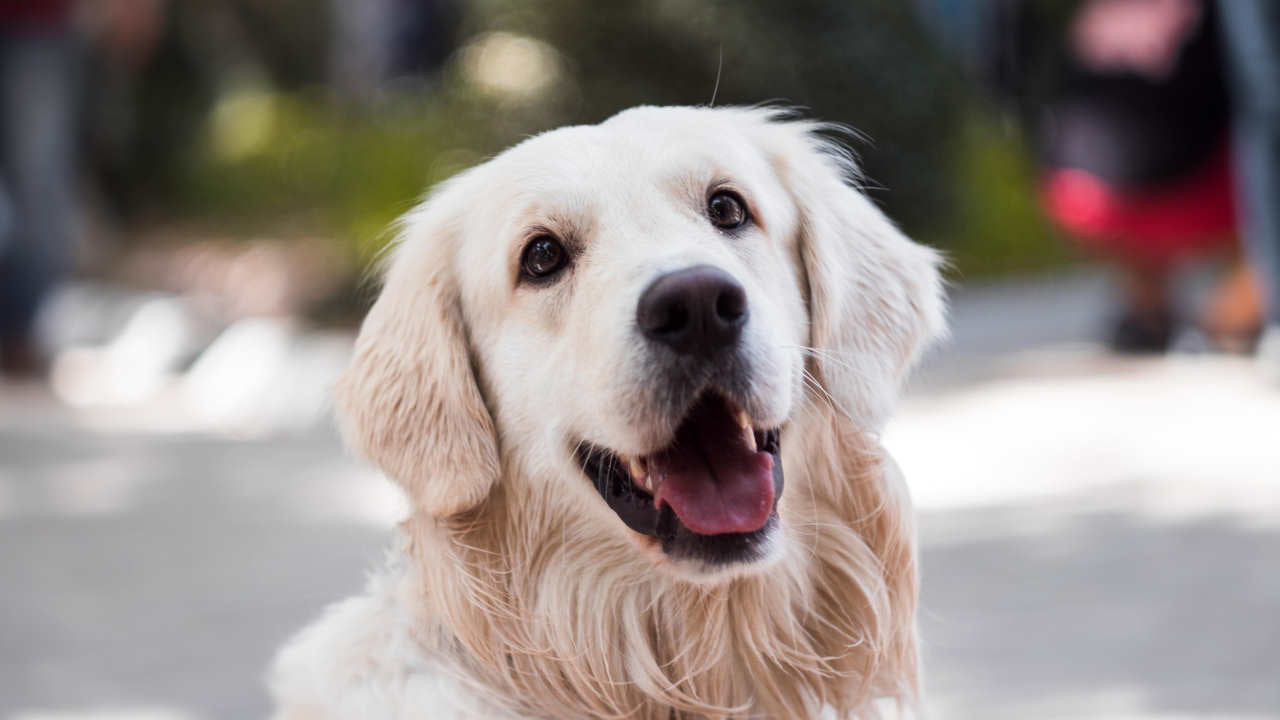Dogs are naturally fearful creatures and it is normal for them to experience fear and anxiety in certain situations. However, when a dog’s fear and anxiety become chronic or severe, it can interfere with their daily life and well-being. As a responsible pet owner, it is important to understand how to recognize and address your dog’s fear and anxiety in order to help them lead a happy and comfortable life.
There are many causes of fear and anxiety in dogs, including genetics, past experiences, and changes in their environment. Common triggers of fear and anxiety in dogs include loud noises, unfamiliar people or animals, and new or unfamiliar environments. Medical conditions, such as a hormonal imbalance or an injury, can also contribute to fear and anxiety in dogs.
Symptoms of fear and anxiety in dogs can vary, but may include panting, shaking, barking, pacing, destructive behavior, and loss of appetite. It is important to recognize these symptoms and address them in order to help your dog feel more comfortable and calm.
There are several things you can do to calm an anxious dog:
- Provide a consistent routine and structure for your dog. Dogs thrive on routine and knowing what to expect can help reduce anxiety.
- Exercise your dog regularly to help reduce stress and promote relaxation.
- Use calming pheromones or music to help create a soothing environment. Calming pheromones, such as Adaptil, mimic the pheromones that a mother dog produces to calm her puppies and can be effective in reducing anxiety in dogs. Playing soothing music, such as classical or calming dog music, can also help relax your dog.
- Avoid punishing your dog for anxious behaviors, as this can increase anxiety. Instead, try to redirect your dog’s attention to a more positive behavior.
- Consider using natural remedies, such as CBD oil or herbal remedies, under the guidance of a veterinarian. These remedies may have a calming effect on your dog and can be used in conjunction with other treatment options.
Medications, such as anti-anxiety drugs or antidepressants, may also be prescribed by a veterinarian to help reduce fear and anxiety symptoms. These medications can be effective in reducing anxiety, but they do not address the underlying cause of the anxiety and may have side effects.
It is important to work with a veterinarian or trained animal behaviorist to determine the most appropriate treatment plan for your dog’s specific needs and to monitor your dog’s progress. It may take time and effort, but with the right treatment plan and a lot of patience and love, you can help your dog overcome their fear and anxiety and lead a happy and comfortable life.

In addition to seeking professional help and implementing a treatment plan, there are several things you can do at home to help your dog cope with their fear and anxiety:
- Gradually expose your dog to the thing they are afraid of in a controlled and gradually increasing manner. This technique, known as desensitization, can help your dog learn that the fearful stimulus is not harmful and can reduce their anxiety.
- Pair the fearful stimulus with something positive, such as treats or praise. This technique, known as counterconditioning, can help your dog associate the fearful stimulus with something positive and can reduce their anxiety.
- Avoid reinforcing anxious behaviors. If you give your dog attention when they are anxious, you may be reinforcing the behavior and making it more likely to occur in the future.
- Provide plenty of mental and physical stimulation for your dog when you are home. This can include training sessions, walks, and interactive toys.
- Create a safe and comfortable environment for your dog. This can include providing a crate or designated area for your dog to retreat to when they are feeling anxious.
It is also important to consider the use of medications for your dog’s fear and anxiety. Medications, such as anti-anxiety drugs or antidepressants, may be prescribed by a veterinarian to help reduce anxiety symptoms. These medications can be effective in reducing anxiety, but they do not address the underlying cause of the anxiety and may have side effects. It is important to work with a veterinarian or a trained animal behaviorist to determine the most appropriate treatment plan for your dog.
In conclusion, fear and anxiety are common issues in dogs that can interfere with their daily life and well-being. By understanding the cause of your dog’s fear and anxiety and implementing a treatment plan that includes behavior modification techniques, medications, and preventative measures, you can help your dog overcome their anxiety and lead a happy and comfortable life. It is important to work with a veterinarian or animal behaviorist to determine the most appropriate treatment plan for your dog’s specific needs and to be patient and consistent in implementing the treatment plan. By providing a consistent routine, exercise, a calm environment, and plenty of mental and physical stimulation, you can help your dog cope with their fear and anxiety and enjoy a fulfilling and happy life.
Here are a few more tips and considerations for helping a dog with fear and anxiety:
-
Seek the help of a professional dog trainer or behaviorist. A trained professional can help you develop a customized treatment plan for your dog’s specific needs and provide guidance on how to implement it. They can also teach you how to recognize and address any underlying issues that may be contributing to your dog’s fear and anxiety.
-
Gradually expose your dog to the things that trigger their fear and anxiety in a controlled and gradually increasing manner. This can help your dog learn that the fearful stimulus is not harmful and can reduce their anxiety.
-
Use positive reinforcement to reward your dog for calm behavior. This can include treats, praise, or toys. By rewarding your dog for calm behavior, you can help them associate calmness with positive experiences.
-
Monitor your dog’s progress and be prepared to adjust the treatment plan as needed. It may take time for your dog to overcome their fear and anxiety and it is important to be patient and consistent in implementing the treatment plan. If you are not seeing improvement, it may be necessary to revisit the treatment plan with your veterinarian or behaviorist.
-
Remember that fear and anxiety are treatable conditions. It may take time and effort, but with the right treatment plan and a lot of patience and love, you can help your dog overcome their fear and anxiety and lead a happy and comfortable life.
-
Finally, it is important to be understanding and patient with your dog. Fear and anxiety can be distressing conditions for dogs, and it is important to show them love and support as they work through their anxiety. With the right treatment plan and a lot of patience and love, you can help your dog overcome their fear and anxiety and lead a happy and comfortable life.

There are several things you can do to prevent fear and anxiety from developing in your dog:
-
- Socialize your dog from a young age. Exposing your dog to a variety of people, places, and experiences can help them feel more comfortable and confident in new situations.
- Gradually expose your dog to new and unfamiliar situations. Start with short periods of time and gradually increase the duration as your dog becomes more comfortable.
- Avoid punishing your dog for fearful behavior. This can increase anxiety and make the problem worse. Instead, try to redirect your dog’s attention to a more positive behavior.
- Ensure that your dog receives plenty of mental and physical stimulation. This can include training sessions, walks, and interactive toys.
- Monitor your dog’s behavior and be attuned to their needs. By understanding your dog’s behavior and body language, you can identify potential triggers of fear and anxiety and take steps to prevent them.
In conclusion, fear and anxiety are common issues in dogs that can interfere with their daily life and well-being. By understanding the cause of your dog’s fear and anxiety and implementing a treatment plan that includes behavior modification techniques, medications, and preventative measures, you can help your dog overcome their anxiety and lead a happy and comfortable life. It is important to work with a veterinarian or animal behaviorist to determine the most appropriate treatment plan for your dog’s specific needs and to be patient and consistent in implementing the treatment plan. By providing a consistent routine, exercise, a calm environment, and plenty of mental and physical stimulation, you can help your dog cope with their fear and anxiety and enjoy a fulfilling and happy life.
Preventing fear and anxiety in your dog is also important. You can do this by socializing your dog from a young age, exposing them to new and unfamiliar situations gradually, avoiding punishing fearful behavior, providing plenty of mental and physical stimulation, and being attuned to your dog’s needs and behavior. By taking these steps, you can help your dog develop confidence and resilience and reduce their risk of developing fear and anxiety.
In summary, fear and anxiety are common issues in dogs that can interfere with their daily life and well-being. By understanding the cause of your dog’s fear and anxiety and implementing a comprehensive treatment plan that includes behavior modification techniques, medications, and preventative measures, you can help your dog overcome their anxiety and lead a happy and comfortable life. It is important to work with a veterinarian or animal behaviorist to determine the most appropriate treatment plan for your dog’s specific needs and to be patient and consistent in implementing the treatment plan. By providing a consistent routine, exercise, a calm environment, and plenty of mental and physical stimulation, you can help your dog cope with their fear and anxiety and enjoy a fulfilling and happy life.




Add comment